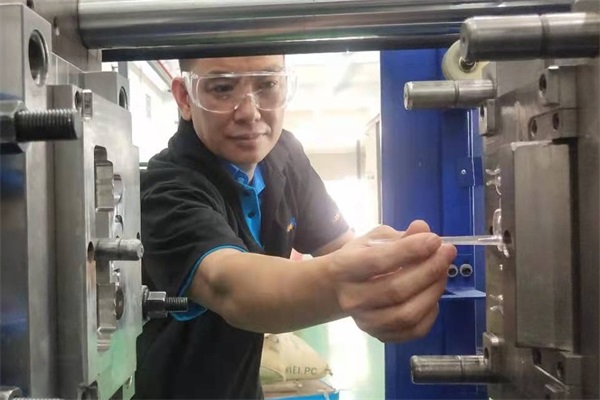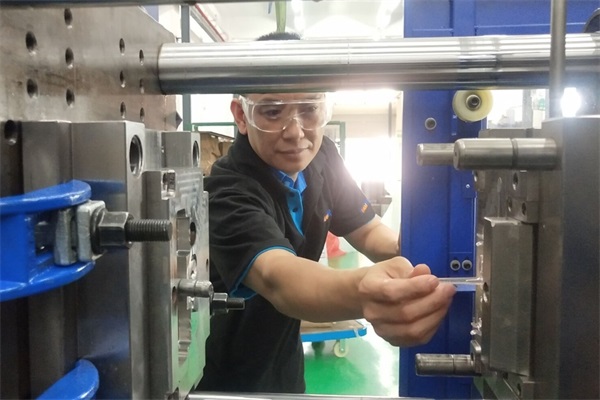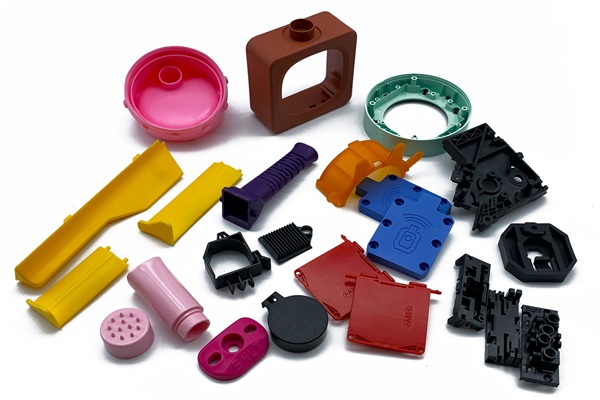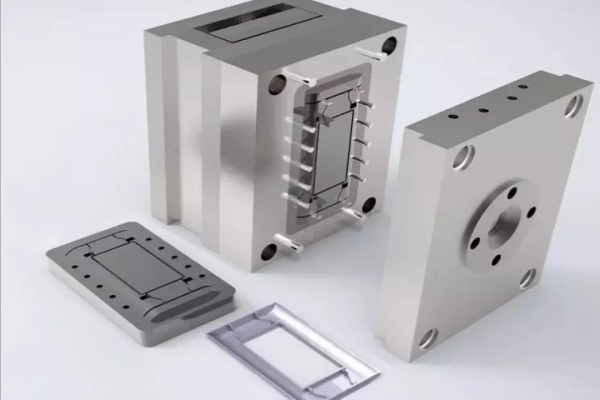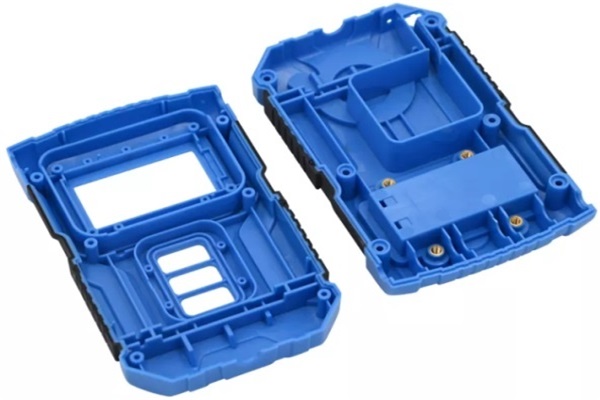Injection molding is a primary shaping process and important basic technology in industrial plastics processing. With this manufacturing technology, customer-specific plastic products can be manufactured cost-effectively from a malleable plastic mass, which has a high level of reproducibility regardless of shape.
Table of Contents
how does injection molding work
The manufacturing process in injection molding takes place cyclically in one operation with a precisely coordinated work cycle, divided into dosing and plasticizing, injection and holding pressure as well as cooling and ejection. A malleable plastic mass is injected into the cavity of a custom-fit mold and ejected as a finished part.
1. Dosing / Plasticizing
The dosed plastic granules pass through a hopper into the spiral gears of a rotating screw, where they are melted by the heat of the cylinder and frictional heat.
2. Injection / Repressurization
The liquid plastic mass is pressed into the injection mold via the sprue channel at a maximum pressure of 2000 bar. The pressing of additional mass serves to compensate for cooling shrinkage.
3. Cool down / Eject
As the sprue solidifies, the injection nozzle closes. The plasticizing cylinder is retracted and the finished injection molded part is automatically ejected after cooling.
What are the injection molding processes?
The molding process is subdivided into thermoplastic, The process of greatest economic importance is thermoplastic injection molding. In addition, special technologies are used, such as insert molding or injection molding of liquid silicone.
Thermoplastic injection molding
Thermoplastic injection molding is the most common process for rapid manufacturing of parts with complex geometries, the highest precision, and high volumes.
In this process, thermoplastics such as polyamide, polycarbonate, or polyethylene are injected into metal molds. These metal molds can be made of aluminum for the production of prototypes, or steel for small batches. Aluminum and steel tools each have their advantages, and the injection molding specialists at TEAM Rapid are happy to design and produce plastic multi-cavity moulds according to your injection material and output requirements.
In addition to the tool’s material, other customer requirements, such as texturing, engraving, or specific patterns, can be easily fulfilled by team rapid’s machines and equipment.
TEAM rapid has a wide range of plastics to choose from for the production of your components. Some examples of this are ABS, PA, PC, PET, PE, PLA, PMMA, PS, PP PEEK, PVC, co-blends, and other thermoplastics. It is also possible to reinforce by using glass fibers, glass beads, minerals, or other additives.
Thermoset Injection Molding
Thermosetting plastics have proven their worth in molding for hard molded plastic parts that can withstand mechanical loads and do not melt or crumble immediately at temperatures between minus 30 and over 100 degrees.
Panhandles, headlight covers, and above all the housings of many electronic devices are injection molded from thermosetting plastics. It is so strong after processing that this plastic can be further processed into its final shape after molding. Drilling, sawing or grinding, and much more are possible with thermoset processing. However, the planned shaping of the thermoset components must be achieved and completed after the first injection. Once hardened, the plastic cannot be deformed again like thermoplastic but instead disintegrates if the temperature gets too high. For all its hardness and brittleness, thermosetting plastics are more susceptible to sharp impacts than thermoplastic, which can break it.
How does thermoset injection molding work?
Due to the properties of the three-dimensional structure of the molecular chains of Thermosetting plastics, this type of plastic liquefies as a trickle at a relatively low temperature from 30 degrees Celsius and solidifies again at 130 degrees Celsius. The not very fluid thermosetting plastics are pressed into the heated tool at a high pressure of 2500 bar. After solidification, the thermoset cannot be liquefied again.
Overmolding
With our overmolding in rapid manufacturing processes, low-volume prototypes and demand-based production parts can be manufactured in as little as 15 days. Our use of aluminum molds offers the advantage of low tooling costs and allows parts to be manufactured using a variety of thermoplastic and liquid silicone materials.
The over-molded parts are manufactured using a standard injection molding process with no heating and cooling lines in the aluminum mold. The slightly longer cycle time allows our casters to monitor injection pressures, cosmetic issues, and basic part quality.
Once the entire barrel is injection molded, the injection mold tool is mounted on the press. The preformed parts are then placed by hand into the mold, where each part is over-molded with either thermoplastic material or liquid silicone.
Liquid Silicone Rubber (LSR) Injection Molding
Today, injection molding is one of the most important methods of processing silicone rubber compounds in the production of large quantities of products and high demands on their quality stability.
Advantages of Liquid Silicone Rubber (LSR) Injection Molding
Injection molding is characterized by high mold precision. Full automation of the process guarantees high-quality elements that do not require additional processing, and a significant reduction in production cycles compared to other methods. At the same time, the cost of molds, machines, and equipment is higher than for other forms. However, this is offset by the high performance of the injection molding machine.
Application of Liquid Silicone Rubber (LSR) Injection Molding
The injection molded rubber method is best suited for small to medium-sized products that are produced in large quantities, such as baby bottle nipples, and o-rings.
What materials is injection molding suitable for?
All plastics that can be easily plastically deformed are used for injection molding. Thermoplastics, duroplastics, and elastomers can be processed, with thermoplastic molding being the process with the greatest economic importance. Typical examples are ABS, PC, PPA, POM, PP, or PMMA plastics.
Advantages of injection molding
The advantages of molding are:
1. High reproducibility of production
2. Little or no post-processing of the molded part is necessary
3. The process can be fully automated
Plastic injection molding service is an economical manufacturing process that is highly reproducible because even complex parts can be made cost-effectively in a single operation and without mechanical post-treatment in all batch sizes. The technology is also very environmentally friendly, as plastic residues can be remelted and reused for new projects. Contact us today for your projects now!
